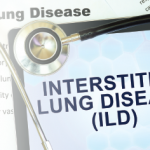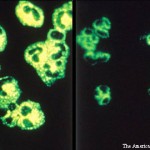BOSTON—Patients with idiopathic pulmonary fibrosis (IPF) now have two new drugs available for treatment, and novel targeted treatments are on the horizon.
“The future is bright for the development of treatments for lung fibrosis, especially with an improved understanding of lung fibrosis pathogenesis,” said Flavia Castelino, MD, assistant professor of medicine, Harvard Medical School, Division of Rheumatology, Massachusetts General Hospital, Boston, who moderated the session, Insights into Lung Fibrosis, at the ACR/ARHP Annual Meeting in Boston in November 2014.
Along with approval of two new drugs, new targets for IPF include novel drugs, such as NOX4 inhibitors that target epithelial cell stress and an IL-13 antibody that targets the innate immune system, she said.
New Treatments Approved
In October 2014, the Food and Drug Administration approved pirfenidone and nintedanib based on Phase 3 data showing the safety and efficacy of these drugs for the treatment of IPF.1,2
Timothy Blackwell, MD, director, Division of Allergy, Pulmonary and Critical Care, Department of Medicine, Vanderbilt University School of Medicine, Nashville, spoke on the trial data leading to the approval of these two drugs, both of which were fast tracked for approval ahead of their scheduled application review.
Both nintedanib and pirfenidone were approved on the basis of their established safety and effectiveness in clinical trials of over 1,200 patients with IPF.3,4 These studies showed a significantly improved forced vital capacity (FVC) in patients treated with nintedanib or pirfenidone compared to placebo.
Nintedanib, a kinase inhibitor that blocks multiple pathways involved in scarring of lung tissue, is not recommended in people with moderate to severe liver problems nor in pregnant women. Pirfenidone, which works on multiple pathways involved in scarring of lung tissue, is not recommended for people with severe liver problems or end-stage kidney disease, or those who require dialysis. Patients taking pirfenidone should be advised to take it with food to minimize nausea and dizziness and avoid or minimize exposure to the sun.
Dr. Blackwell also spoke about a possible overlap in treatments for IPF and connective tissue lung disease and idiopathic interstitial lung diseases based on lessons learned from familial interstitial pneumonia (FIP), a disease course that is similar to IPF. Genetic studies in FIP show two disease-associated pathways, one that involves surfactant proteins (surfactant protein C or SFTPC and surfactant protein A or SFTPA2) and the other involving telomerase (telomerase reverse transcriptase or TERT, telomerase RNA template or TR, and dyskerin or DKC1).



